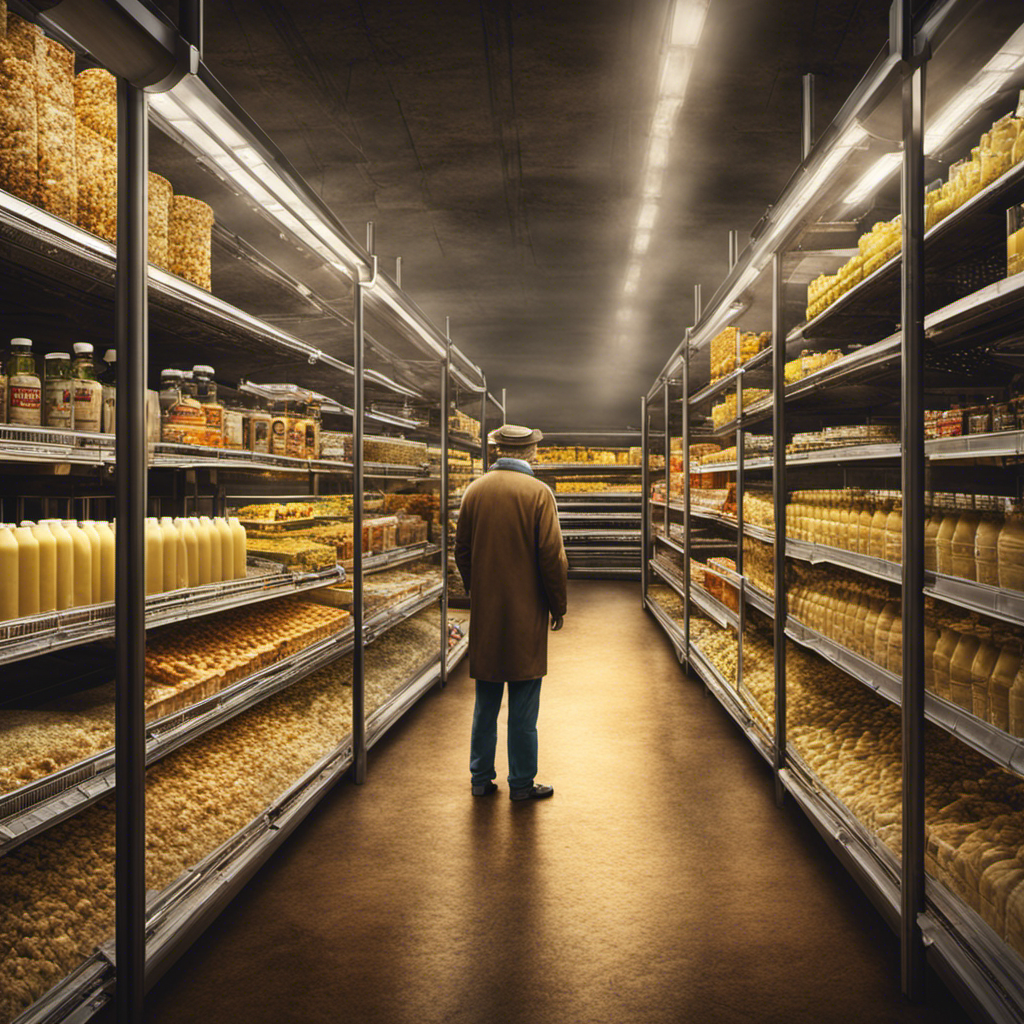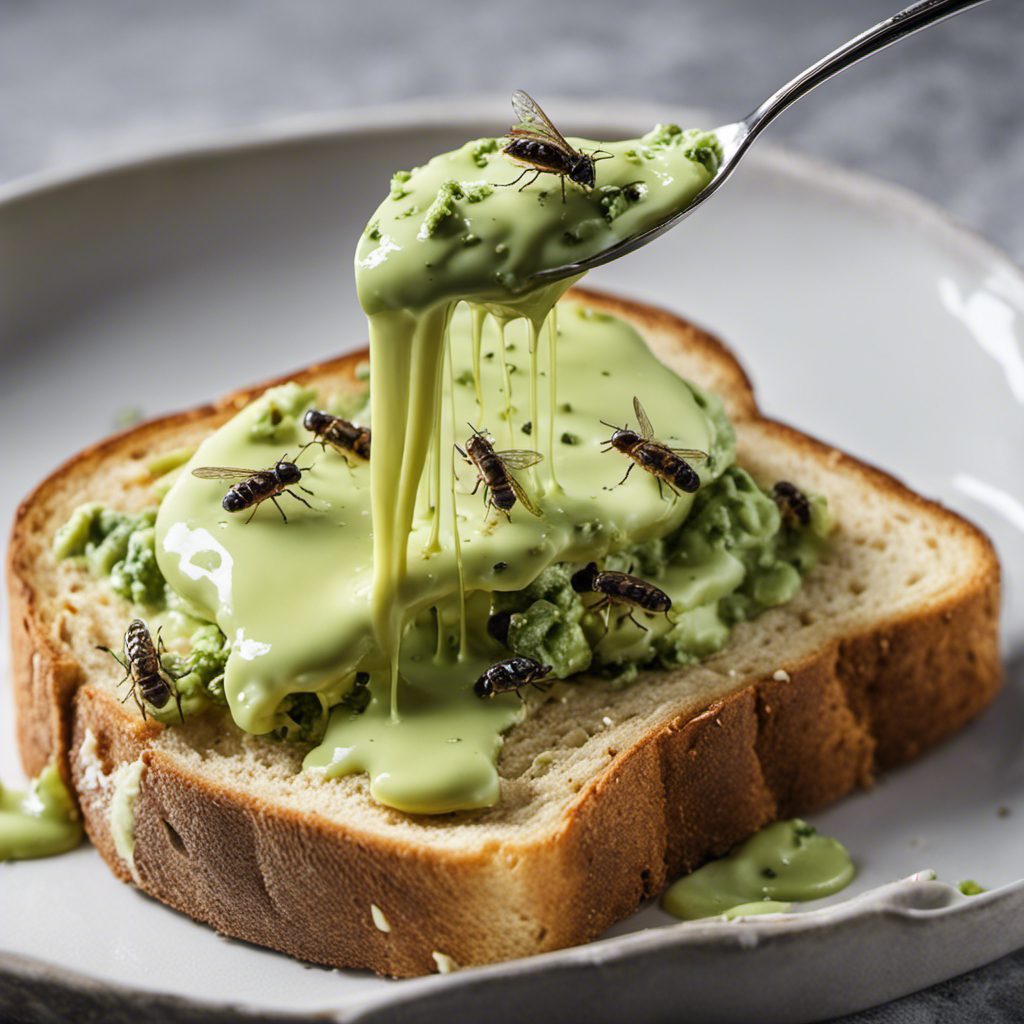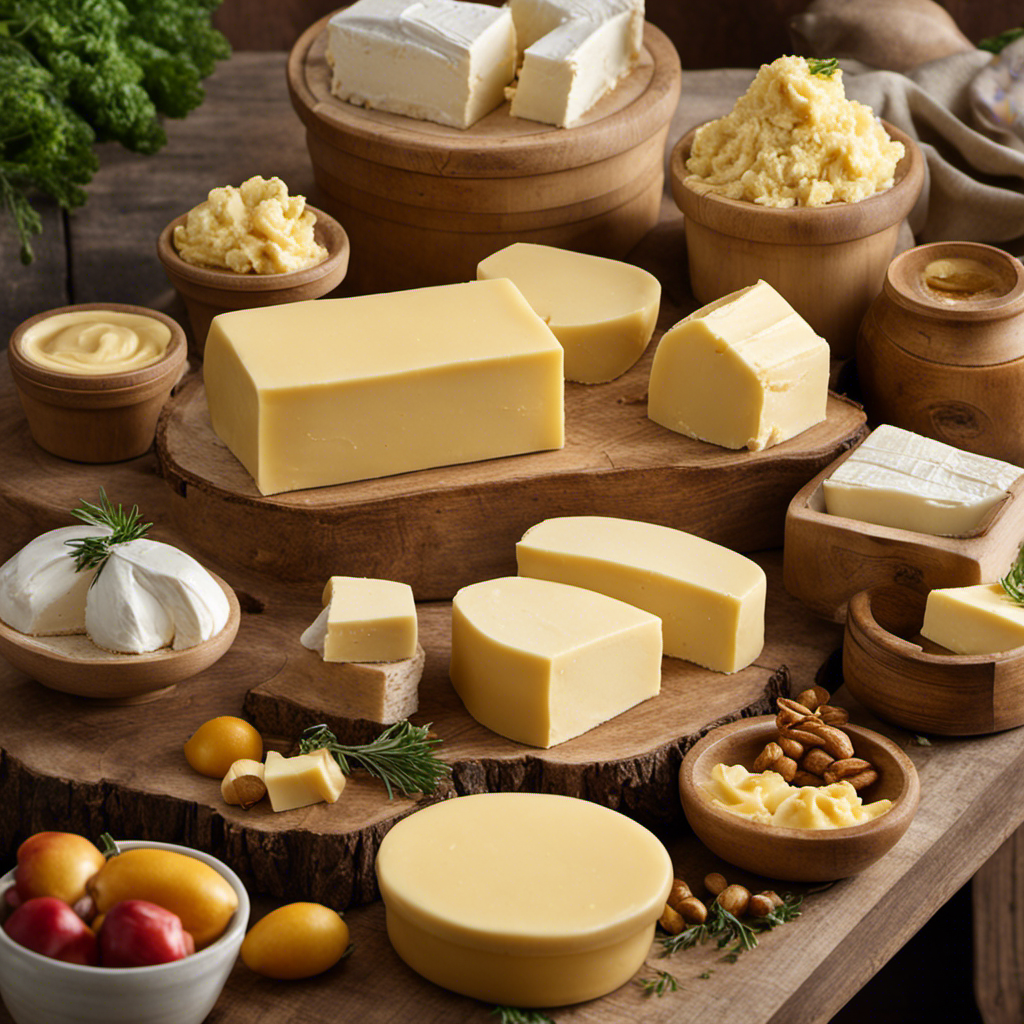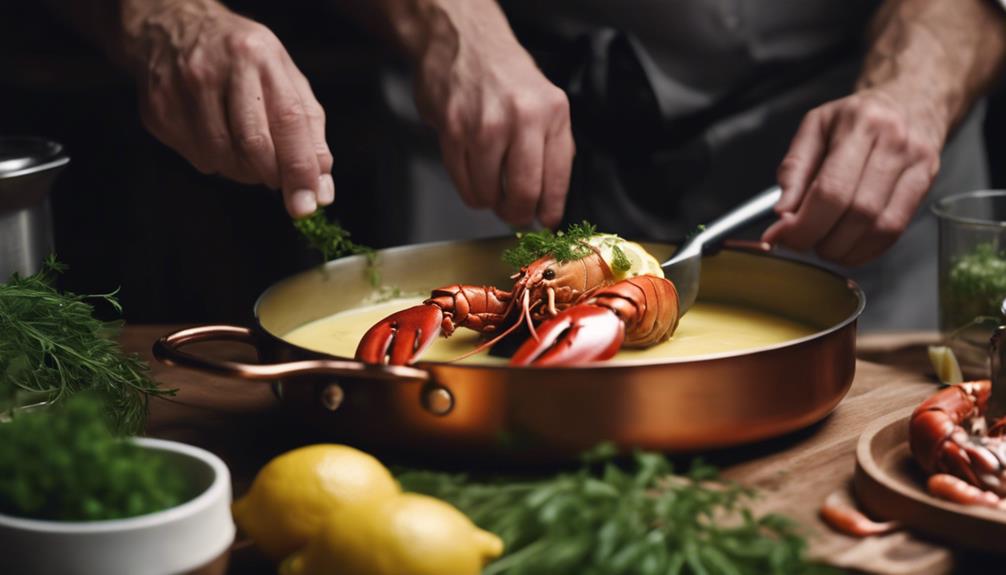Do you ever crave butter? I definitely do!
In this article, we will delve into the fascinating science behind these cravings and explore the role that fat plays in our desire for butter.
We will also examine the psychological aspect of butter as a comfort food and discuss the factors that influence these cravings.
So, if you’re curious about why you can’t resist that creamy, indulgent spread, keep reading!
We’ll also provide practical tips for managing and controlling your butter cravings, as well as healthy alternatives to satisfy your taste buds.
Key Takeaways
- Butter cravings are a result of our body’s natural craving for fatty foods, which provide energy and trigger the release of dopamine in the brain.
- Childhood experiences and cultural influences play a significant role in shaping our cravings for butter.
- Butter serves as a comfort food due to its creamy texture and taste, evoking feelings of pleasure and nostalgia.
- Factors such as the combination of fats and flavors in butter, as well as psychological factors like stress and emotional state, can influence cravings for butter.
The Science Behind Butter Cravings
The science behind butter cravings is still not fully understood by researchers. However, studies have shown that our desire for butter may be linked to the role of fat in our taste preferences.
Fat is an essential nutrient that provides energy and helps absorb certain vitamins. Our bodies have evolved to crave fatty foods because they are a concentrated source of calories.
Butter, being a rich source of fat, triggers the release of dopamine in the brain, which gives us a feeling of pleasure and satisfaction.
However, it is important to be mindful of our butter consumption due to health concerns. Butter is high in saturated fat, which has been linked to an increased risk of heart disease.
Moderation is key, and it is recommended to opt for healthier fats, such as olive oil or avocado, to satisfy our cravings while promoting overall health.
Understanding the Role of Fat in Cravings
Understanding the role of fat in cravings helps us comprehend why we might feel a strong desire for butter. Our childhood experiences play a significant role in shaping our cravings for certain foods. Researchers have found that individuals who were exposed to butter during their childhood are more likely to develop cravings for it later in life. This is because our brain forms strong associations between certain foods and pleasurable experiences during our early years.
Additionally, the cultural significance of butter consumption also plays a role in our cravings. In many cultures, butter is considered a staple ingredient and is used in various traditional dishes. This cultural significance can influence our cravings for butter as it becomes deeply ingrained in our culinary preferences.
Butter as a Comfort Food: Exploring the Psychological Aspect
Exploring the psychological aspect, you might find that butter serves as a source of comfort and brings about feelings of nostalgia. The emotional connection we have with food is a complex interplay of our personal experiences, cultural influences, and even our brain chemistry. When we think of comfort foods, butter often comes to mind. It’s creamy, rich, and melts in your mouth, evoking feelings of warmth and contentment. The table below provides a glimpse into the cultural influences and emotional connections associated with butter:
| Cultural Influence | Emotional Connection |
|---|---|
| Childhood memories | Nostalgia |
| Culinary tradition | Comfort |
| Indulgence | Pleasure |
| Sense of home | Security |
As you can see, butter is more than just a condiment or ingredient; it carries a deeper meaning for many of us. Understanding these psychological aspects can shed light on why we may crave butter. In the subsequent section, we will explore the factors that influence these cravings.
Factors That Influence Butter Cravings
When it comes to butter cravings, several factors can influence our desire for it.
There are both physiological and psychological reasons behind our cravings for butter.
Physiologically, butter contains a combination of fats and flavors that can activate the pleasure centers in our brain, making it a highly desirable food. Additionally, the texture and taste of butter can provide a sense of comfort and satisfaction.
Psychologically, butter cravings can also be influenced by factors such as stress, emotional state, and cultural conditioning. For example, some individuals may turn to butter as a way to cope with stress or as a form of self-soothing.
Understanding these factors can help us better manage and address our cravings for butter.
Now, let’s debunk some common myths about butter cravings.
Debunking Common Myths About Butter Cravings
When it comes to the topic of butter cravings, there are a few key points that need to be addressed.
First, it’s important to understand the nutritional benefits of butter. Contrary to popular belief, butter can actually be a healthy addition to your diet when consumed in moderation.
Second, there are psychological reasons behind our cravings for butter. Factors such as stress, emotional eating, and conditioned responses can all contribute to our desire for this creamy spread.
Lastly, it’s crucial to debunk the health concerns associated with butter. While it’s true that butter is high in saturated fat, recent research suggests that it may not be as detrimental to our health as once thought.
Nutritional Benefits of Butter
Did you know that butter contains important vitamins and minerals that can benefit your overall nutrition? Despite the popular belief that butter is unhealthy, it actually offers several nutritional advantages. Take a look at the table below to see how butter compares to margarine in terms of key nutrients:
| Nutrient | Butter | Margarine |
|---|---|---|
| Vitamin A | High | Low |
| Vitamin D | Moderate | Low |
| Vitamin E | Low | High |
| Calcium | Low | High |
| Potassium | Low | High |
| Cholesterol | High | Low |
As you can see, butter is a good source of vitamins A and D, which are essential for eye health and calcium absorption, respectively. It also contains moderate amounts of vitamin E, which has antioxidant properties. While margarine may be low in cholesterol, it often lacks the essential vitamins and minerals found in butter. So, if you want to boost your intake of important nutrients, consider incorporating butter into your diet in moderation.
Psychological Reasons for Cravings
After learning about the nutritional benefits of butter, I became curious about the psychological reasons behind cravings. There are several underlying causes that can contribute to our desire for specific foods, including butter. Understanding these causes can help us develop effective coping mechanisms.
• Emotional triggers: Cravings for butter may arise from emotional states such as stress, boredom, or sadness. It can be a way of seeking comfort or distraction.
• Nutrient deficiencies: Our body craves certain foods when it lacks specific nutrients. Butter is rich in fat-soluble vitamins like A, D, E, and K, so craving it could indicate a deficiency in these vitamins.
• Habitual patterns: Sometimes, we crave butter simply because we have developed a habit of consuming it regularly.
To cope with these cravings, it’s important to listen to our bodies, practice mindful eating, and find healthier alternatives to fulfill our cravings.
Debunking Health Concerns?
If you’re curious about the health concerns surrounding butter, it’s important to separate fact from fiction and explore the scientific evidence. There are many misconceptions about butter and its impact on our health. Let’s deconstruct some of these misconceptions and explore the physiological triggers that may contribute to our cravings for butter.
| Myth | Fact |
|---|---|
| Butter causes heart disease | Butter is high in saturated fats, but recent research suggests that saturated fats may not be as harmful as once thought when consumed in moderation. |
| Butter is bad for cholesterol levels | Butter does contain cholesterol, but studies show that dietary cholesterol has little impact on blood cholesterol levels for most people. |
| Butter is linked to weight gain | While butter is calorie-dense, weight gain is more closely tied to overall calorie intake and other lifestyle factors. |
Understanding the facts about butter can help us make informed decisions about our dietary choices. Now, let’s explore how to manage and control our butter cravings.
How to Manage and Control Butter Cravings
One way to manage and control butter cravings is by finding healthier alternatives. Instead of reaching for a stick of butter, try these options:
- Avocado: Its creamy texture and healthy fats make it a great substitute for butter in recipes like baking or spreading on toast.
- Nut butters: Almond, cashew, or peanut butter can add richness and flavor to dishes and provide essential nutrients like protein and fiber.
- Greek yogurt: This tangy and creamy ingredient can be used as a substitute for butter in baking or as a topping for baked potatoes or toast.
Managing stress and practicing mindful eating can also help curb butter cravings. When we are stressed, we tend to crave comfort foods like butter. By finding healthy alternatives and being mindful of our cravings, we can make better choices that satisfy our taste buds and support our overall health.
Transitioning into the subsequent section, let’s explore some more healthy alternatives to satisfy butter cravings.
Healthy Alternatives to Satisfy Butter Cravings
When it comes to satisfying butter cravings, there are a variety of healthy alternatives that can be just as delicious.
One option is to try plant-based butter substitutes, which are made from ingredients like coconut oil or avocado. These substitutes can provide a similar creamy texture and taste, while also offering beneficial nutrients.
Additionally, flavorful spreads and dips can be a great way to add a burst of flavor to your meals without relying on butter. Options like hummus, guacamole, or nut-based spreads can be used as tasty alternatives that are also packed with nutrients.
Plant-Based Butter Substitutes
There’s a variety of plant-based butter substitutes available in the market that can satisfy your cravings. These plant-based spreads offer a healthier alternative to traditional butter, without compromising on taste or texture.
Here are three options to consider:
-
Avocado Spread: Made from ripe avocados, this creamy spread is rich in healthy fats and provides a smooth and buttery texture. It can be used as a spread on toast or as a replacement for butter in baking recipes.
-
Nut Butter: Whether it’s almond butter, cashew butter, or peanut butter, these spreads offer a delicious and nutritious alternative to butter. Packed with protein and essential nutrients, nut butters can be used as a topping for toast, in smoothies, or as a base for sauces and dressings.
-
Coconut Oil: With its high smoke point and natural sweetness, coconut oil is a versatile substitute for butter. It can be used for cooking, baking, and even as a spread on bread. Plus, it contains medium-chain fatty acids that are easily digested and provide a quick source of energy.
Flavorful Spreads and Dips
If you’re looking for a tasty and versatile option, consider trying flavorful spreads and dips. These delicious condiments offer a world of possibilities for enhancing your meals and snacks.
From tangy herb spreads to creamy indulgence, there’s a spread or dip to suit every palate. One popular choice is hummus, a Mediterranean dip made from chickpeas, tahini, and garlic. With its smooth texture and rich flavor, hummus is perfect for dipping vegetables, pita bread, or even spreading on sandwiches.
Another option is tzatziki, a Greek yogurt-based dip that combines cucumber, garlic, and dill. This refreshing dip is great for adding a cool and creamy element to grilled meats or as a dip for crackers.
Whether you’re looking for a quick snack or a flavorful addition to your meal, these spreads and dips are sure to satisfy your cravings.
Frequently Asked Questions
Does Eating Butter Increase the Risk of Heart Disease?
Eating butter in moderation may not significantly increase the risk of heart disease. While butter consumption can raise cholesterol levels, the role of saturated fat in heart disease is complex and depends on other factors like overall diet and lifestyle.
Can Butter Cravings Be a Sign of a Nutrient Deficiency?
Butter cravings can be a sign of a nutrient deficiency or a dietary need. It’s important to listen to our bodies and ensure we are getting a balanced diet to meet our nutritional requirements.
Are There Any Health Benefits Associated With Consuming Butter?
There are health benefits associated with consuming butter, especially grass-fed butter. It contains essential nutrients like vitamins A, D, and K2. Butter is also a good source of healthy fats, making it suitable for a keto diet.
Is It Possible to Develop an Addiction to Butter?
It is possible to develop cravings for butter, but it is unlikely to be classified as an addiction. Cravings for certain foods can be influenced by various factors such as taste preferences and cultural influences.
Can Stress or Emotional Factors Contribute to Butter Cravings?
Stress can definitely contribute to butter cravings. When I’m feeling overwhelmed, I often find comfort in indulging in buttery foods. It’s like a soothing balm for my emotions.
Conclusion
In conclusion, understanding the science and psychology behind butter cravings can help us manage and control them effectively.
While cravings for butter may seem irresistible, it is important to remember that they can be influenced by various factors such as stress, emotions, and even nutritional deficiencies.
By incorporating healthy alternatives into our diets, we can satisfy our cravings while still maintaining a balanced and nutritious lifestyle.
Interestingly, a study conducted by the University of California found that individuals with higher levels of stress are more likely to crave high-fat foods like butter. This statistic highlights the connection between our emotional state and our food cravings, emphasizing the importance of addressing stress in managing cravings.










